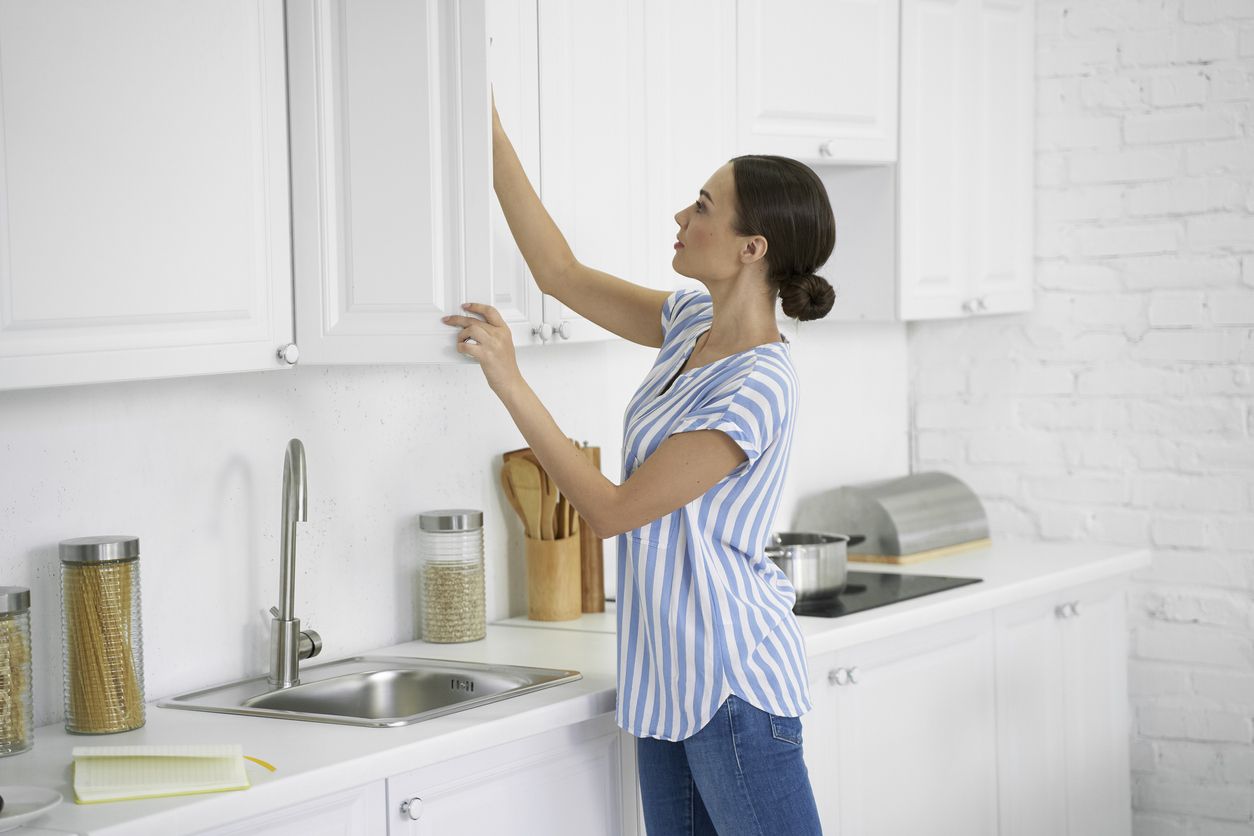Revamp Your Kitchen: How to Refinish Cabinets that Stand the Test of Time

When Is It Better to Replace Your Cabinets?
There’s really only one instance when replacing your cabinets seems like the obvious solution, and that’s when the cabinet boxes themselves are damaged structurally. Even if the doors and drawers are in poor condition, if your cabinet boxes are still in good shape, you will probably be better off upgrading and refinishing the existing cabinets instead of replacing them outright. If you are doing a complete tear out and redesign of your kitchen, then new cabinets in place of the old is probably the easiest option. That way, your contractor (or your spouse, or yourself) doesn’t have to worry about maintaining the existing cabinets’ structure during demolition.Benefits of Refinishing Your Cabinets
In pretty much every other case, refinishing your cabinets instead of replacing them can give you the freedom and flexibility in your budget to add other special features elsewhere in your kitchen remodel. Even if you’re doing a full kitchen renovation, there may be some elements to your existing cabinets that you appreciate (perhaps some unique built-ins or a cubby that doesn’t really need to be replaced), you don’t have to replace ALL of your cabinets to achieve the aesthetic you’re looking for. Refinishing your cabinets is simple and convenient. Not only is it a more economical option, it’s also a far more sustainable option that avoids unnecessary landfill waste. And if you aren’t doing a complete kitchen renovation, refinishing your cabinets can provide you with that beautiful, fresh, new look you desire without a heavy investment. So you’ve decided to go for it! Great! Before you rush out to buy supplies and throw down your old sheets to catch wayward paint, there’s definitely a right way to refinish your cabinets and a wrong way.The Wrong Way to Refinish Cabinets
We’ve seen plenty of people attempt to refinish their cabinets the wrong way. They try to paint around hinges and handles, knobs and pulls. They think it can be done on a short Saturday afternoon, wrapped up before dinnertime. They skip important steps, like cleaning and sanding, assuming that it isn’t that big of a deal. They leave the cabinet doors and cabinet drawers on the cabinet boxes. They make the wrong primer or color choices. These and other rushed approaches to cabinet refinishing can compromise the quality and longevity of your project. They can also just make the project one giant headache.The Right Way to Refinish Cabinets
But if you reverse some of the mistakes above and follow these key tips and tricks, your whole project will go far smoother than you could have imagined.Take your time.
Once you’re done with your kitchen renovation, you’re going to want to enjoy it, not stare angrily at the minor, avoidable flaws day in and day out. Give your doors and drawers the recommended time to dry before applying the next coat and prior to reinstallation to protect them from scratches or smudges.
Remove the hardware and doors, clean the cabinets, and sand your surfaces.
It’s tedious work, but a smooth, clean, and sanded surface will ensure that your paint or varnish adheres to the best of its ability.
Label, label, label!
We like puzzles just as much as a middle-aged, midwestern woman, but puzzles are meant for leisurely afternoons, not for reassembling your finished kitchen. Be sure to label each cabinet door and drawer to match the cabinet box they came from. If you plan on reusing your hardware, you may want to label these as well.
Think outside of the box.
You are not “stuck with” your existing cabinets, even if you keep the cabinet boxes. You can reface your existing cabinet door, replace the doors with new fronts altogether, select new hinges and handles, or mix-match knobs and pulls to achieve a look that’s all your own. You can also replace some of your cabinets and retain the rest, incorporating hardware that complements the older design or matches the metal while changing the look, which can still bring harmony and balance to your kitchen aesthetic.
Choose the right primer and color.
Cabinet refinishing is a lot of work, no matter what way you spin it, so it’s important to select the right color from the start.
You don’t want to do this again in just a couple of years. Spend time on Pinterest and browse the Internet for paint combinations that match your preferred aesthetic. Because cabinets are such a time consuming refinishing process, you might choose a more neutral color for your cabinets and opt for bolder palettes on your walls, trim, and accent pieces to give your room a distinctive look. Renner Primers are an excellent choice for cabinet refinishing because they can cover both stained cabinets and previously painted cabinets. Likewise, Renner topcoats give you a high quality, long-lasting finish that is also environmentally friendly.With high quality primers and paints from Renner, you can be assured that your cabinet refinishing project will withstand the test of sticky fingers, damp hands, and repeated washing for years and years to come. For help selecting the best primer, paints, and equipment to complete your kitchen cabinet refinishing project, connect with Timberlane Finish Solutions. We’ll make sure you’re all set up for a successful kitchen refresh!
